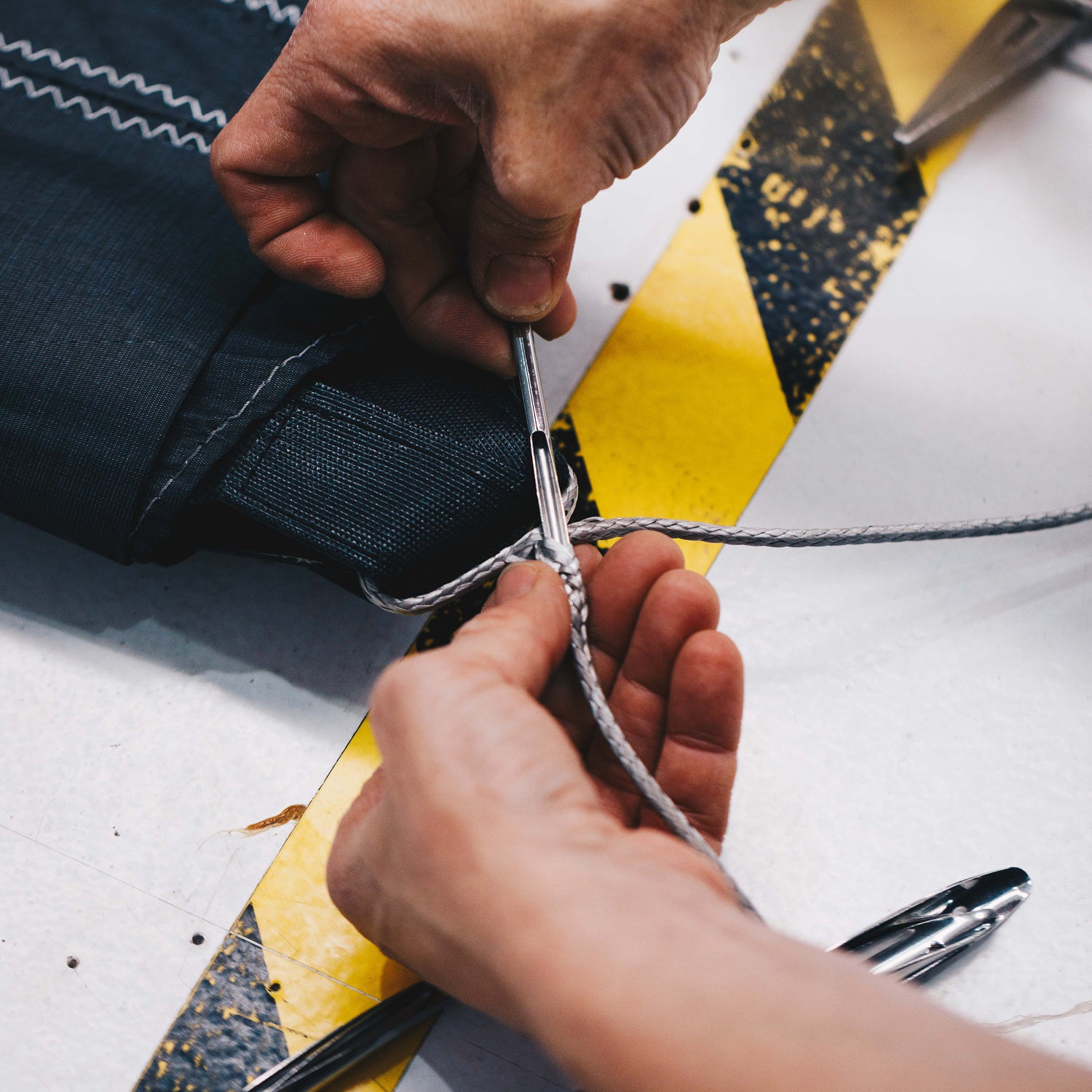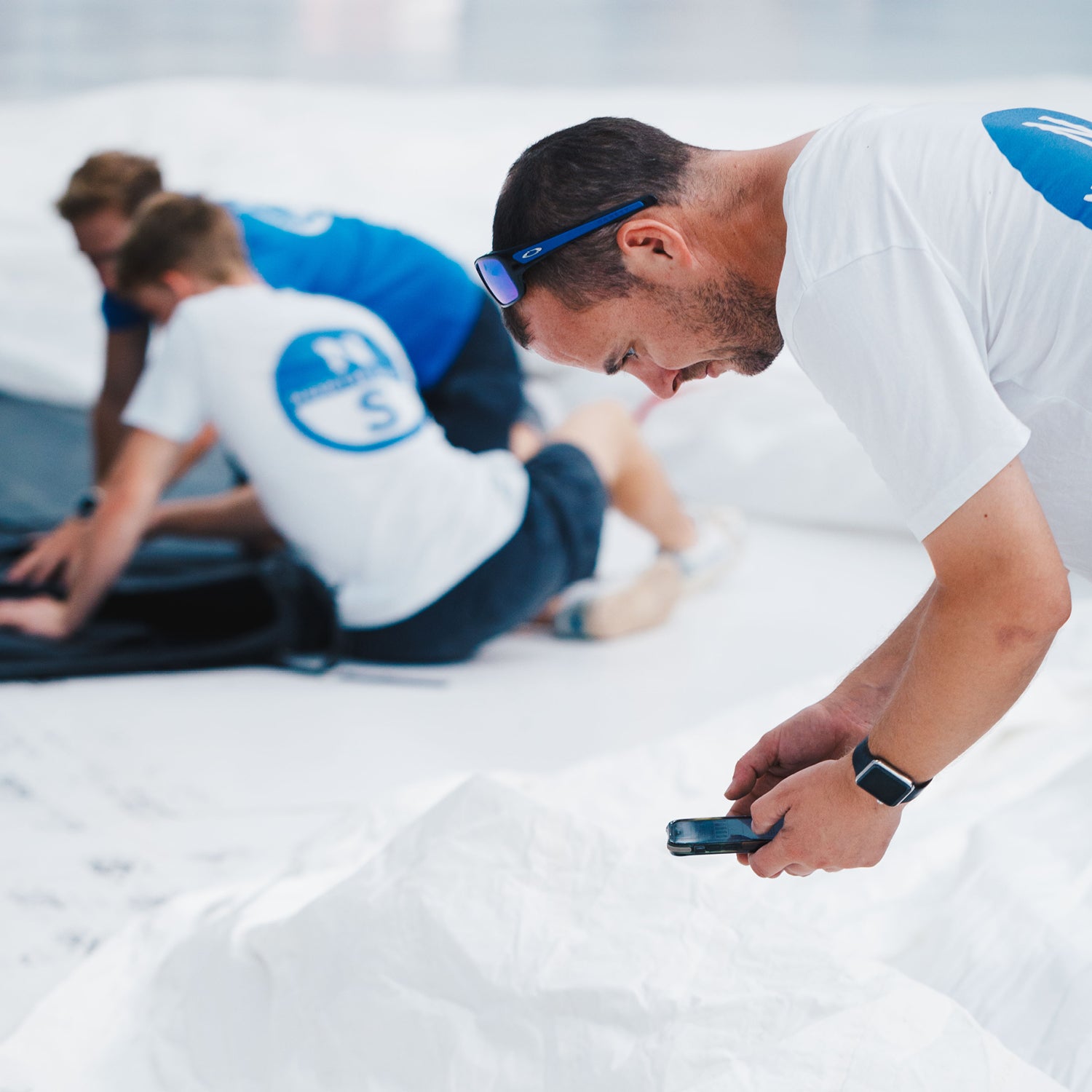
OFF-SEASON AND WINTER SAIL CARE GUIDE
OFF-SEASON AND WINTER SAIL CARE GUIDE
Palma-based, North Sails Service Expert, Ben Fletcher shares his top tips on how to protect and care for your sails in the off-season.
As we come to the end of the sailing season and head into winter, the North Sails service team is gearing up for a busy season of sail care and repair. Whether helping clients prepare for the Caribbean sailing season, or packing their boats away for a winter hibernation, our network of global service lofts is your local resource to North Sails wealth of experience.
TOP 10 TIPS FOR MAINTENANCE & WINTER SAIL CARE
1. AVOID PROLONGED FLOGGING OF SAILS
Flogging and leech flutter can prematurely degrade a sail's performance. Minimize motoring into the wind with flapping sails. After hoisting sails, trim promptly and steer a course so the sails fill rather than flog.
Flogging and leech flutter can prematurely degrade a sail's performance. Minimize motoring into the wind with flapping sails. After hoisting sails, trim promptly and steer a course so the sails fill rather than flog.

2. MINIMIZE LEECH FLUTTER.
Adjust your leech line to eliminate leech flutter (tension is just a touch more than necessary to stop the flutter). The tension required will change as the breeze increases and you adjust the jib sheet. Be careful not to over-tension the
leech line; if the leech becomes hooked, ease it off. Proper placement of genoa cars will also prevent leech flogging on your genoa.
Adjust your leech line to eliminate leech flutter (tension is just a touch more than necessary to stop the flutter). The tension required will change as the breeze increases and you adjust the jib sheet. Be careful not to over-tension the leech line; if the leech becomes hooked, ease it off. Proper placement of genoa cars will also prevent leech flogging on your genoa.

3. USE YOUR SAILS IN THEIR DESIGNED WIND RANGES
Contact your North sailmaker if you don't know the recommended wind ranges for your sails.
Contact your North sailmaker if you don't know the recommended wind ranges for your sails.

4. RELEASE TENSION ON YOUR SAILS
Ease the jib, main halyard, and outhaul when leaving the boat to prevent permanent luff and foot stretching. Releasing batten tension also reduces distortion at the batten ends.
Ease the jib, main halyard, and outhaul when leaving the boat to prevent permanent luff and foot stretching. Releasing batten tension also reduces distortion at the batten ends.

5. LIMIT EXTENDED AND UNNECESSARY EXPOSURE TO THE SUN
UV rays are one of your sail's worst enemies. Roller furling genoas should have UV-resistant material covering the leech and foot. If you store your mainsail on the boom, ensure it is always covered when unused.
UV rays are one of your sail's worst enemies. Roller furling genoas should have UV-resistant material covering the leech and foot. If you store your mainsail on the boom, ensure it is always covered when unused.

6. RINSE AND REPEAT
Rinse your sails with fresh water and dry thoroughly before storing them to prevent mildew and color bleeding in spinnakers. Rinse fittings in fresh water to help prevent corrosion. Store dry sails in a well-ventilated location. And remember, dry sails are of equal importance to clean sails. Moisture breeds mold issues. Your local North Sails loft can recommend the best seasonal and off-season storage solutions.
Rinse your sails with fresh water and dry thoroughly before storing them to prevent mildew and color bleeding in spinnakers. Rinse fittings in fresh water to help prevent corrosion. Store dry sails in a well-ventilated location. And remember, dry sails are of equal importance to clean sails. Moisture breeds mold issues. Your local North Sails loft can recommend the best seasonal and off-season storage solutions.

7. CREASING IS PREVENTABLE
Avoid folding sails on the same fold lines so that small creases don't become permanent.
Avoid folding sails on the same fold lines so that small creases don't become permanent.

8. SAIL BAGS NEED LOVE, TOO
Regularly rinse sail bag zippers or lubricate with silicone spray.
Regularly rinse sail bag zippers or lubricate with silicone spray.

9. STAY ON AN ANNUAL MAINTENANCE SCHEDULE
Have your sails inspected by the North Sails Certified Service experts at least once a season. Regular inspection will prevent minor problems from becoming big ones. You can also ask your local loft to create an onboard sail repair kit for your specific sails.
Have your sails inspected by the North Sails Certified Service experts at least once a season. Regular inspection will prevent minor problems from becoming big ones. You can also ask your local loft to create an onboard sail repair kit for your specific sails.

10. KEEP A SAIL LOG
Photographing your sails regularly and logging the hours used will help you and your sailmaker evaluate your sail inventory seasonally. Your sail
photos can be digitized and analyzed using North's SailScan computer program.

Store Locator is loading from Storemapper plugin...
FEATURED STORIES

12 December




